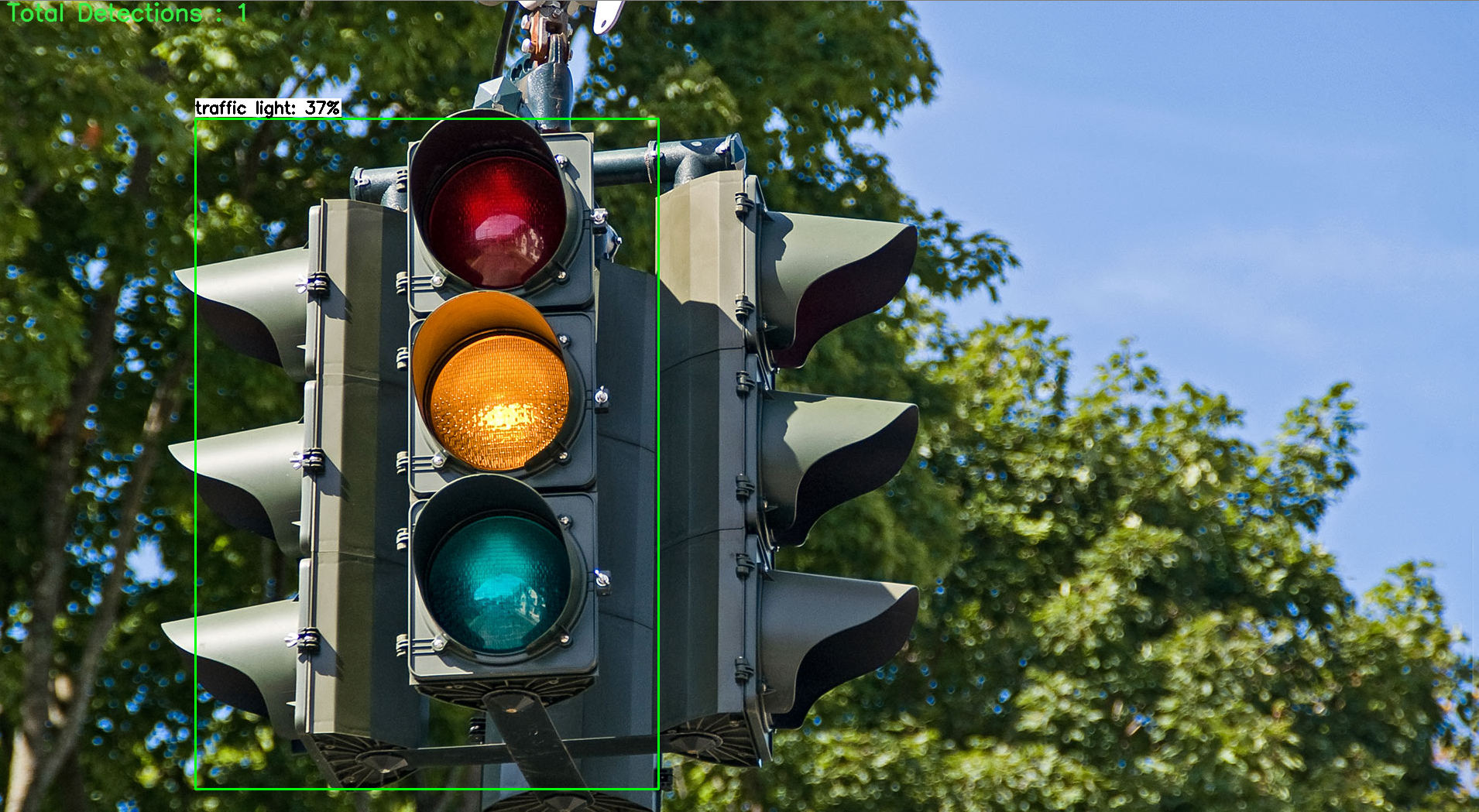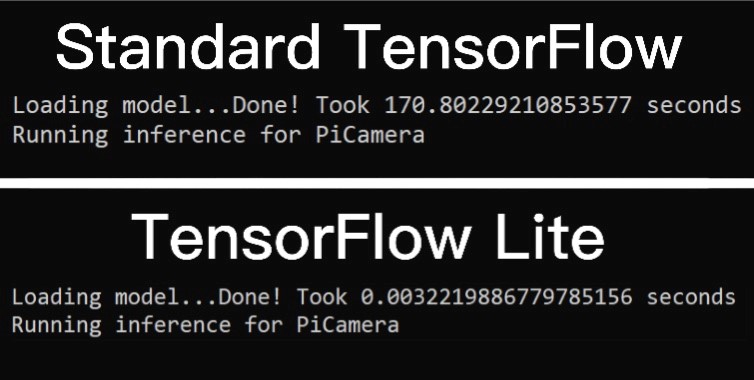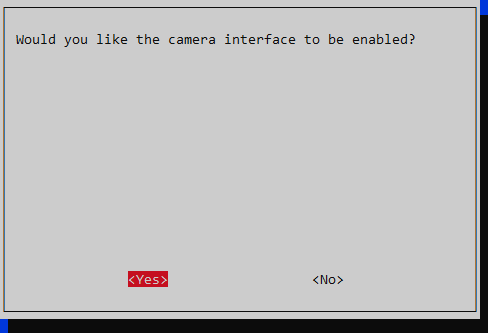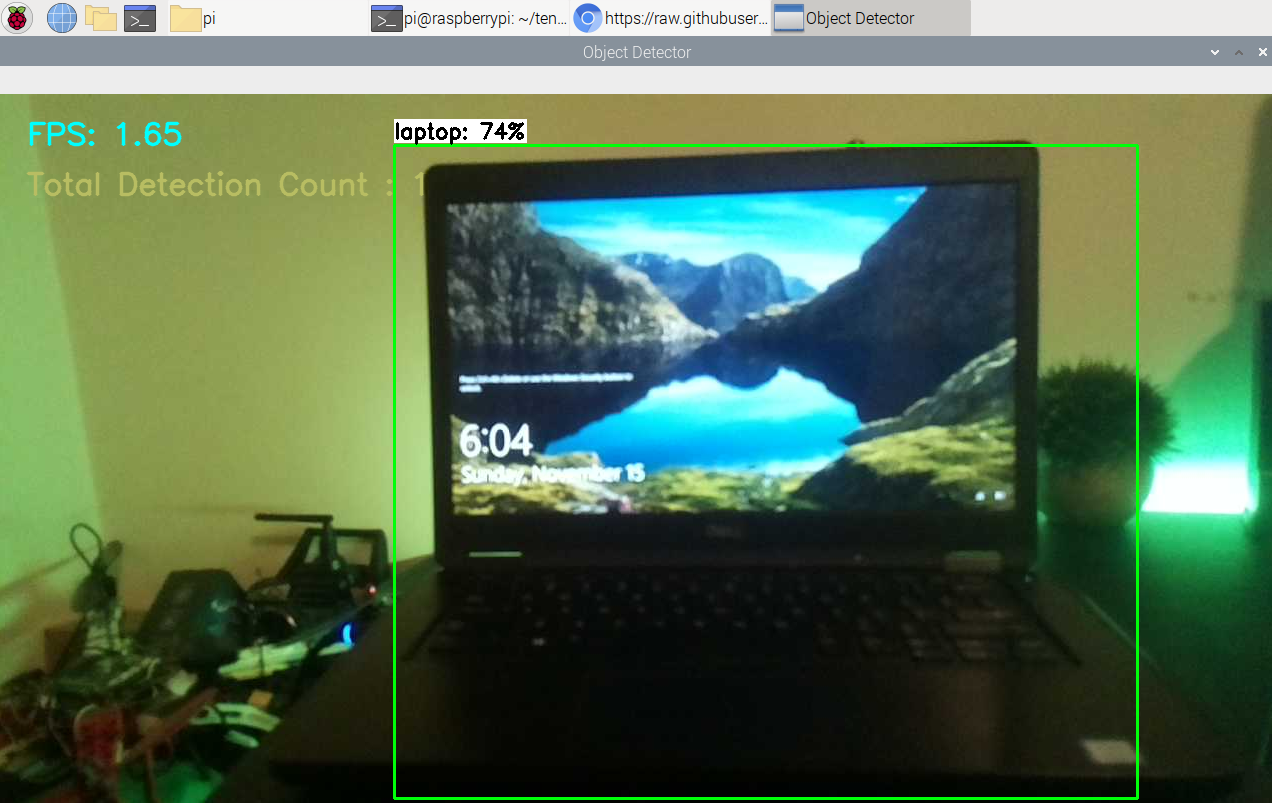TensorFlow-2-Lite-Object-Detection-on-the-Raspberry-Pi
Learn how to Convert and Run TensorFlow Lite Object Detection Models on the Raspberry Pi
Introduction
This repository is a written tutorial covering two topics. TensorFlow Lite conversion and running on the Raspberry Pi. This document contains instructions for running on the Raspberry Pi. If you want to convert a Custom TensorFlow 2 Object Detection Model, please refer to the conversion guide. These instructions are likely to change often with time, so if you have questions feel free to raise an issue. This guide has last been tested and updated on 11/13/2020.
I will soon make a YouTube Tutorial which will be posted here, and an extremely import step here!
Why TensorFlow Lite?
This guide is my 3rd in a series about the TensorFlow Object Detection API. Of my 2 previous guides, one of them is about TensorFlow Object Detection on the Raspberry Pi. If I already have a tutorial, why make another? TensorFlow Lite is a massive improvement from your standard TensorFlow installation. Not only is it so much easier to install and use, but the performance is significantly better. It's optimized to run on mobile and other edge devices such as the Raspberry Pi. The numbers speak for themselves!
It took over 3 minutes to load a TensorFlow model and less than a second to load TensorFlow Lite model. TensorFlow Lite loaded literally 5,693,400% faster(yes I did the math).
Table of Contents
- Setting up the Raspberry Pi and Getting Updates
- Organizing our Workspace and Virtual Environment
- Installing the Prerequisites
- Running Object Detection on Image, Video, or Pi Camera
Step 1: Setting up the Raspberry Pi and Getting Updates
Before we can get started, we must have access to the Raspberry Pi's Desktop Interface. This can be done with VNC Viewer or the standard Monitor and HDMI. I made a more detailed video which can be found below
Once you have access to the Desktop Interface, either remote or physical, open up a terminal. Retrieve updates for the Raspberry Pi with
sudo apt-get update
sudo apt-get dist-upgrade
Depending on how recently you setup or updated your Pi, this can be instantaneous or lengthy. After your Raspberry Pi is up-to-date, we should make sure our Camera is enabled. First to open up the System Interface, use
sudo raspi-config
Then navigate to Interfacing Options -> Camera and make sure it is enabled. Then hit Finish and reboot if necessary.
Step 2: Organizing our Workspace and Virtual Environment
Then, your going to want to clone this repository with
git clone https://github.com/armaanpriyadarshan/TensorFlow-2-Lite-Object-Detection-on-the-Raspberry-Pi.git
This name is a bit long so let's trim it down with
mv TensorFlow-2-Lite-Object-Detection-on-the-Raspberry-Pi tensorflow
We are now going to create a Virtual Environment to avoid version conflicts with previously installed packages on the Raspberry Pi. First, let's install virtual env with
sudo pip3 install virtualenv
Now, we can create our tensorflow virtual environment with
python3 -m venv tensorflow
There should now be a bin folder inside of our tensorflow directory. So let's change directories with
cd tensorflow
We can then activate our Virtual Envvironment with
source bin/activate
Note: Now that we have a virtual environment, everytime you start a new terminal, you will no longer be in the virtual environment. You can reactivate it manually or issue echo "source tensorflow/bin/activate" >> ~/.bashrc. This basically activates our Virtual Environment as soon as we open a new terminal. You can tell if the Virtual Environment is active by the name showing up in parenthesis next to the working directory.
When you issue ls, your tensorflow directory should now look something like this
Step 3: Installing the Prerequisites
This step should be relatively simple. I have compressed all the commands into one shellscript which you can run with
bash install-prerequisites.sh
This might take a few minutes, but after everything has been installed you should get this message
Prerequisites Installed Successfully
Now, it's best to test our installation of the tflite_runtime module. To do this first type
python
From the Python terminal, enter these lines
Python 3.7.3 (default, Jul 25 2020, 13:03:44)
[GCC 8.3.0] on linux
Type "help", "copyright", "credits" or "license" for more information.
>>> import tflite_runtime as tf
>>> print(tf.__version__)
If everything went according to plan, you should get
2.5.0
Note: The link for downloading the tflite_runtime module is bound to change based on your Python version and platform/architecture. With time, newer versions will be also be released. I'll try my best to update this guide frequently, but the most recent instructions for the installation are located here
Step 4: Running Object Detection on Image, Video, or Pi Camera
Now we're finally ready to run object detection! In this repository, I've included a sample model that I converted as well as 3 object detection scripts utilizing OpenCV. If you want to convert a custom model or a pre-trained model, you can look at the TensorFlow Lite Conversion Guide that I wrote. A majority of the code is from Edje Electronics' tutorial with a few small adjustments.
TFLite-PiCamera-od.py: This program uses the Pi Camera to perform object detection. It also counts and displays the number of objects detected in the frame. The usage is
usage: TFLite-PiCamera-od.py [-h] [--model MODEL] [--labels LABELS]
[--threshold THRESHOLD] [--resolution RESOLUTION]
optional arguments:
-h, --help show this help message and exit
--model MODEL Provide the path to the TFLite file, default is
models/model.tflite
--labels LABELS Provide the path to the Labels, default is
models/labels.txt
--threshold THRESHOLD
Minimum confidence threshold for displaying detected
objects
--resolution RESOLUTION
Desired webcam resolution in WxH. If the webcam does
not support the resolution entered, errors may occur.
TFLite-Image-od.py: This program takes a single image as input. I haven't managed to get it to run inference on a directory yet. If you do, feel free to share it as it might help others. This script also counts the number of detections. The usage is
usage: TFLite-Image-od.py [-h] [--model MODEL] [--labels LABELS]
[--image IMAGE] [--threshold THRESHOLD]
[--resolution RESOLUTION]
optional arguments:
-h, --help show this help message and exit
--model MODEL Provide the path to the TFLite file, default is
models/model.tflite
--labels LABELS Provide the path to the Labels, default is
models/labels.txt
--image IMAGE Name of the single image to perform detection on
--threshold THRESHOLD
Minimum confidence threshold for displaying detected
objects
--resolution RESOLUTION
Desired webcam resolution in WxH. If the webcam does
not support the resolution entered, errors may occur.
TFLite-Video-od.py: This program is similar to the last two however it takes a video as input. The usage is
usage: TFLite-Video-od.py [-h] [--model MODEL] [--labels LABELS]
[--video VIDEO] [--threshold THRESHOLD]
[--resolution RESOLUTION]
optional arguments:
-h, --help show this help message and exit
--model MODEL Provide the path to the TFLite file, default is
models/model.tflite
--labels LABELS Provide the path to the Labels, default is
models/labels.txt
--video VIDEO Name of the video to perform detection on
--threshold THRESHOLD
Minimum confidence threshold for displaying detected
objects
--resolution RESOLUTION
Desired webcam resolution in WxH. If the webcam does
not support the resolution entered, errors may occur.
Now to finally test it out, run
python TFLite-PiCamera-od.py
If everything works you should get something like this
Congratulations! This means we're successfully performing real-time object detection on the Raspberry Pi! Now that you've tried out the Pi Camera, why not one of the other scripts? Over the next weeks I'll continue to add on to this repo and tinker with the programs to make them better than ever! If you find something cool, feel free to share it, as others can also learn! And if you have any errors, just raise an issue and I'll be happy to take a look at it. Great work, and until next time, bye!






